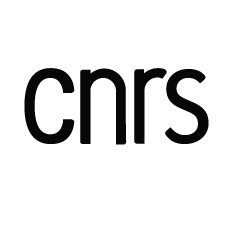Colloids catalysis oxidation
Team leader: Prof. Véronique Nardello-Rataj
Assistant team leader : Dr Jesús Fermin Ontiveros
Team leader foreword
The CÏSCO2 team joined the UCCS in January 2015. It is composed of 9 permanent researchers from Centrale Lille Institute-ENSCL and the University of Lille. The originality and visibility of the CÏSCO2 team come from its expertise in chemistry and physical chemistry of formulation and its ability to design and grasp complex systems whether to characterize them, understand them or apply them. Thanks to the synergies stemming from its expertise, the team benefits from a national and international reputation, generating numerous collaborations. The research topics of the CÏSCO2 team are part of the themes of the region, the Hubs of the University of Lille "Science for a changing planet" and "Digital technology at the service of humanity", as well as the scientific challenges of Centrale Lille. It maintains numerous industrial collaborations with multinationals and SMEs, systematically striving to bring out the scientific challenges underlying the finalized research in order to maintain a good balance between upstream and downstream research.
Véronique Rataj, Professor at Centrale Lille Institute - ENSCL
Team members
| Name | Function | Employer |
|---|---|---|
| Jean-Marie Aubry | Professor emeritus | Centrale Lille |
| Marianne Catte | Assistant Professor | Univ. Lille |
| Jean-François Dechezelles | Assistant Professor | Centrale Lille |
| Raphaël Lebeuf | Assistant Professor | Centrale Lille |
| Loic Leclercq | Assistant Professor | Univ. Lille |
| Véronique Nardello-Rataj | Professor | Centrale Lille |
| Jesús Fermin Ontiveros | Assistant Professor | Centrale Lille |
| Christel Pierlot | Assistant Professor | Centrale Lille |
| Nicolas Rolland | Assistant Professor | Univ. Lille |
Research topics
Formulation is at the heart of the CÏSCO2 team's research activities. From the design of functional molecules to application via physicochemical characterization, we strive to understand, at the molecular level, the phenomena involved in the complex matrices of the formulation, by characterizing the systems, developing new tools and concepts, rationalizing using structure/property relationships via experimental and in silico approaches, thus providing new knowledge both upstream and downstream. The emergence of new thematic orientations resulting from fruitful collaborations in recent years as well as the recruitment of a new lecturer with a "numerical modeling" profile allows us to strengthen and broaden our base of skills and expertise, now structured around 4 axes, whose unifying objective is to respond to current issues and challenges, whether environmental or societal.
Formulation and Physical Chemistry of Chemical Specialties and Dispersed Systems

Using concepts, experimental tools and physicochemical descriptors, we study the behavior of functional compounds and dispersions with the aim of developing more human- and environmentally friendly alternatives (e.g. surfactants or amphiphilic polymers derived from biomass to replace polyethoxylated fatty alcohols, new green solvents) and new applications such as oil/oil emulsions allowing the introduction of wood pyrolysis oils into fossil fuels or the development of "colloidal tectonics" which consists in generating, by self-assembly of molecules, colloidal particles capable of stabilizing dispersed systems including Pickering emulsions. This type of supracolloids formed by self-association reduce the problems of synthesis by covalent bonds (energy efficiency, minimization of synthesis steps, organic solvents and required raw materials), allow the use of biosourced compounds and reduce toxicity due to their ability to dissociate into molecular species.
Keywords: Dispersions; Micro-, Nano-, Emulsions; Foams; Surfactants; Amphiphiles; Green solvents
Formulation and Interfacial Catalysis

The concept of "Pickering Interfacial Catalysis (PIC)" developed about ten years ago in collaboration with the CNRS/Solvay E2P2L Joint Unit in Shanghai has since experienced remarkable growth (Angewandte Chem. 2015 - cited 477 times). New systems based on plasmonic colloidal particles have recently been developed for interfacial catalysis in emulsions. Within the framework of an international chair and the PEPR ECOCHEM, an extension to Pickering foams will be explored as well as to new bioinspired amphiphilic catalytic particles, with the aim of improving the efficiency of transformations, mainly oxidation reactions based on hydrogen peroxide, while reducing the energy footprint.
Keywords: Oxidation catalysis; Pickering emulsions; Catalytic foams; Plasmonic effect
Formulation and Energy

The sustainable storage of renewable energies is an important issue in a context of energy transition. Redox flow batteries are a relevant solution as soon as the solubility of anthraquinones in the medium is sufficient. Several strategies are envisaged, consisting either of the chemical modification of anthraquinones or of the addition of additives. In another field, the incorporation of organic phase change materials or fluids into immobilization matrices such as aluminosilicate geopolymers can be a sustainable solution to reduce environmental impacts by regulating temperature in response to climate change, or for waste storage. The implementation of these new materials requires formulation steps.
Keywords: Energy; Batteries; Biodiesel; Redox molecules; Geopolymers; Storage; Waste
Formulation and Numerical Approaches

Computer-aided design (CAD) of formulated products appears as a promising tool. Indeed, with appropriate models, the formulator is able to reduce the available chemical space through a numerical examination, resulting in a short list of potential solutions that can then be tested experimentally. Although such approaches are available, their potential is not fully exploited and a radical change in the way formulation is approached can be expected in the coming years. In particular, the combination of more recent approaches, with both theory-based numerical models like COSMO-RS and data-driven ones like machine learning (introduced as the fourth scientific paradigm by Jim Gray in 2007), has been highlighted as a promising avenue. Thus, CÏSCO2, drawing on its experience in the development of numerical modelling and with the HT-SMARTFORMU screening platform, aims to position itself as a major contributor in this field.
Keywords: Molecular Dynamics; Machine Learning; COSMO-RS; Artificial Intelligence

